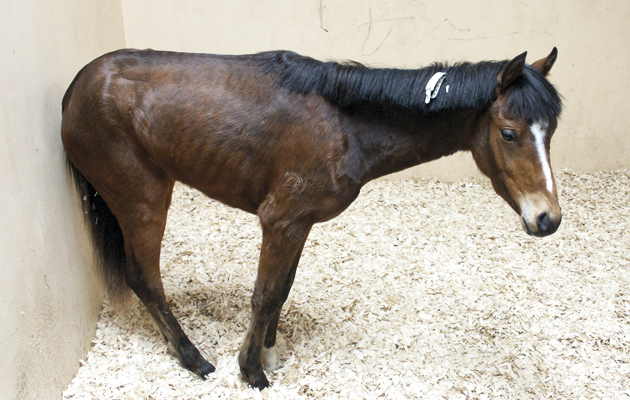Similarities between the signs of equine grass sickness (EGS) in horses and Alzheimer’s in humans have been found in a ground-breaking study.
Researchers from the University of Edinburgh’s Roslin Institute and Royal (Dick) School of Veterinary Studies were hoping to find out more about the causes of EGS when they made the discovery.
They looked at nerve tissue from six horses that had died from the condition and found that it contained proteins commonly seen in the brains of Alzheimer’s patients.
“This is the first study to show similarities between an apparently unrelated neurodegenerative disease of large animals and human neurological conditions,” said Dr Tom Wishart from the Roslin Institute, co-leader of the study.
“Although the causes of these conditions are unlikely to be shared, the findings suggest that similar mechanisms could be involved in the later stages of disease.”
In total, 506 different proteins were found to be altered in nerve tissue from horses with EGS compared to those that had died from other causes.
Prof Bruce McGorum, who led the study, told H&H that they are still trying to find the cause of EGS.
He added that he is hopeful that data from the study can be used to develop a non-invasive test to accurately diagnose EGS before death, as this is often challenging.
Earlier this year, H&H reported on a rise in the number of EGS cases (news, 14 May).
The often fatal condition attacks nerve cells in horses and relatively little is known about it.
There are three types of the disease: acute (sudden on-set with colic-like signs), sub-acute (similar but less severe) and chronic.
Signs include abdominal pain, poor appetite, patchy sweating, increased heart rate and saliva, dribbling and depression.
It is most prevalent from April to September
A spokesman for The Equine Grass Sickness Fund, who funded the study, said that this is an exciting project as it ventures into “uncharted territory”.
“Although it does not help identify the cause of the disease, it furthers our understanding of the changes that take place within the horse,” he told H&H.
“If it helps lead to a non-invasive method of diagnosis in the live horse, that would be a major step forward.”
The results of the study were published in the journal Molecular and Cellular Proteomics on 13 September.
Ref: H&H 15 October, 2015
You may also be interested in…




